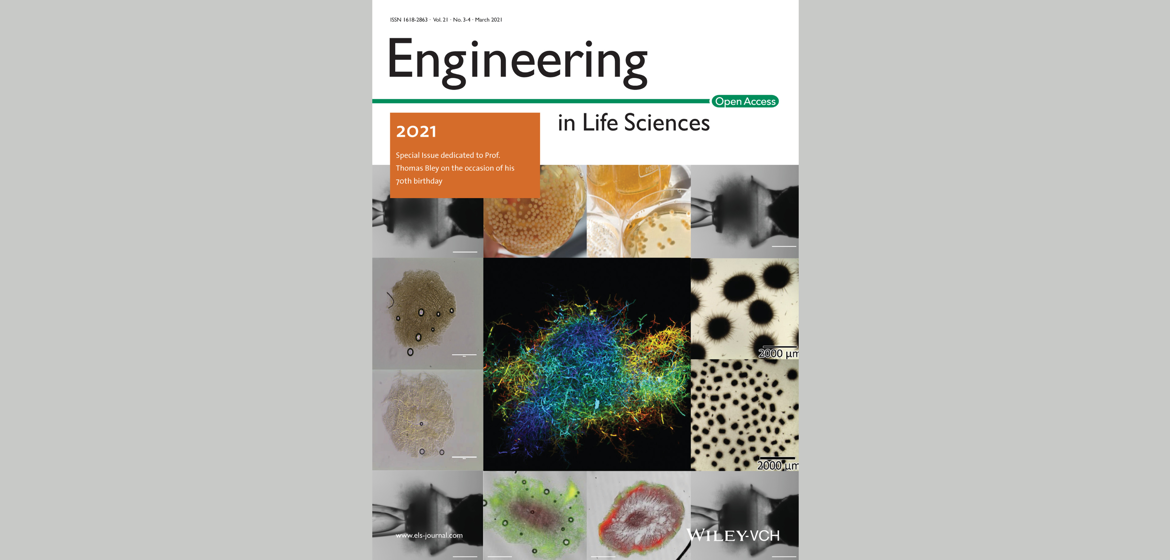“In this study, the biocatalytic performance of a Baeyer-Villiger monooxygenase (BVMO) catalyzing the reaction of cyclohexanone to ε-caprolactone was investigated in Pseudomonas biofilms. Biofilm growth and development of two Pseudomonas taiwanensis VLB120 variants, Ps_BVMO and Ps_BVMO_DGC, were evaluated in drip flow reactors (DFRs) and rotating bed reactors (RBRs). Engineering a hyperactive diguanylate cyclase (DGC) from Caulobacter crescentus into Ps_BVMO resulted in faster biofilm growth compared to the control Ps_BVMO strain in the DFRs. The maximum product formation rates of 92 and 87 g/(m2.d) were observed for mature Ps_BVMO and Ps_ BVMO_DGC biofilms, respectively. The application of the engineered variants in the RBR was challenged by low biofilm surface coverage (50-60%) of rotating bed cassettes, side-products formation, oxygen limitation, and a severe drop in production rates with time. By implementing an active oxygen supply mode and a twin capillary spray feed, the biofilm surface coverage was maximized to 70-80%. BVMO activity was severely inhibited by cyclohexanol formation, resulting in a decrease in product formation rates. By controlling the cyclohexanone feed concentration at 4 mM, a stable product formation rate of 14 g/(m2.d) and a substrate conversion of 60% was achieved in the RBR.”

Highlights:
- This article involves the use of a rotating bed reactor for a biocatalytic process involving biofilms. The biofilm of Pseudomonas taiwanensis, with a genetically introduced Baeyer-Villiger monooxygenase (BVMO), was grown directly on 3D-printed polyamide inserts installed in the RBR S3. The biofilm, immobilized on the cartridges, was then used to catalyze the conversion of cyclohexanone. The authors comment that the work opens up the possibility to use biofilms in rotating bed reactors for synthesis via biocatalysis.
- “The SpinChem® rotating bed reactor (RBR) Model S3 was used to study biofilm growth and catalytic performance on the RBBR cassette under shear stress imposed by the rotational speed. Further modifications of the RBBR operation were accomplished to mimic the high air-liquid interface attained in the drip-flow system. These modifications include localizing the rotating bed reactor in the air phase and supplying the medium via a nozzle in a “spray feed fashion” in a radial direction. Spraying was performed intermittently at a flow rate of 0.42 mL/min as 1-second pulses followed by 20-s pauses. During biofilm cultivation, the cartridge was rotated at 200 rpm, and the medium droplets were passed through the 3D-printed plastic inlets driven by centrifugal force. Oxygen consumed within the system was exchanged in a passive mode by using a sterile filter at the top of the reactor lid.”

